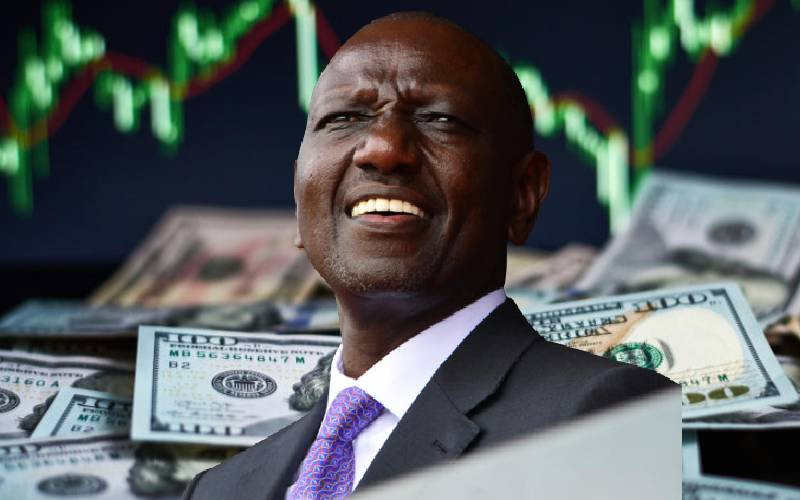Retail dollar buyers are paying up to Sh154 per unit in Kenyan banking halls as the demand for the greenback continues to surge.
This is as the margin between the US dollar’s printed rate by the Central Bank of Kenya (CBK) and the market rate for customers quoted by banks and foreign exchange bureaus continues to widen.
This bucks projections by the State that the shilling would strengthen following the recently rolled out interbank market reforms and a State import oil deal.
President William Ruto – who is today expected to preside over the launch of a new CBK-backed mobile trading platform that enables Kenyans to invest via telephone in government securities – had said in April he expected the shilling to appreciate to under 120 per dollar “in the next couple of months”, citing the oil import deal that would cut demand for dollars.
“In the next month or so you will see the exchange rate coming down in a very phenomenal way.
In fact in my estimation, in the next couple of months, the dollar will come below Sh120, maybe Sh115, you never know,” the President said in a televised government meeting.
CBK data showed the shilling exchanged at an average of 146.1353 on Friday.
“The Kenya Shilling remained relatively stable against major international and regional currencies during the week ending September 7.
“It exchanged at 146.04 per US dollar on September 7, compared to 145.41 per US dollar on August 31,” said the CBK in its weekly bulletin.
But several large banks are now selling the dollar up to Sh154, with bankers and forex bureaus saying the higher prices have been driven by demand and the cost of accessing the hard currency on their part.
A spot check by The Standard showed I&M Bank was selling the dollar at Sh152.5 per unit and buying at Sh144 per unit.
Standard Chartered and Equity Bank quoted the selling price of the dollar at Sh152 and Sh151.9 per unit respectively on Friday, while buying at Sh141 and Sh142.7.
Family Bank was selling the US currency at Sh149.5 per unit and buying at Sh144, as per quotes listed in its banking halls.
Kenya had previously experienced hard currency shortages, weakening the shilling, as importers scrambled for reliable supplies.
Kenya signed an oil import deal with companies in the United Arab Emirates and Saudi Arabia recently, putting in place a longer credit period, and altering the structure of the deal to stagger the demand for dollars in the market.
But the country is staring at worsened effects of a currency crisis as a $4 billion (Sh584 billion) fuel import bill under the government’s scheme that hoped to ease pressure against the shilling matures in September, amid the country’s volatile dollar reserves.
The International Monetary Fund (IMF) earlier estimated the accumulating bill under the plan will cross the half-trillion shillings mark by the end of this month when the dollar-denominated payment will be due.
A weak shilling is harmful to Kenya given it is an import-driven economy.
Kenya imports various goods including cars, petroleum, machinery, medicine and pharmaceutical products, vegetable oil, wheat, clothing, and shoes.
The cost of servicing public debt is also set to rise with a weakened shilling piling pressure on the public purse.
The Ruto government intends to buy back part of the $2 billion (Sh292 billion) Eurobond ahead of the June 2024 maturity date.
It reckons the buyback would help it effectively deal with the repayment burden amid negative sentiments with global ratings agency Moody’s equating it to a default.
The depreciating value of the Kenyan shilling against the US dollar has seen the value of the country’s foreign reserves erode significantly.
The pool of critical reserves fell for the latest fifth straight week in a row to Sh1 trillion in the week ending September 7, the CBK weekly statistical supplement showed on Friday.
Foreign exchange reserves are largely tapped for government payments.













 (Updated 2025)
(Updated 2025)




Discussion about this post